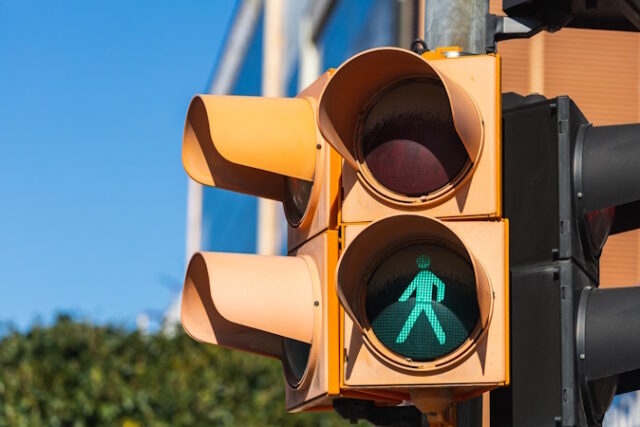
Sophee Langerman was walking her bike in Chicago’s Lakeview neighborhood when a car turning right rolled through a red light and slammed into it. The bicycle required extensive repairs, and Langerman believes drivers should not have the option to decide for themselves when they think it’s safe.
A study by the National Motorists Association found that drivers turning right on red caused less than one pedestrian death and one bicyclist death per two years.
The United States is one of the few major countries that generally allow right turns on red. The government warned states in the 1970s that the prohibition of right on red could risk federal funding, but the policy has endured.
Washington, D.C. allowed right-on red last year, but safety advocates are bracing for blowback from drivers.
Jonathan Kincade, communications coordinator at the Washington Area Bicyclists Association, said it doesn’t make sense to treat cars and bikes the same.
Priya Sarathy Jones is concerned that right-on-red bans will fall disproportionately on lower-income drivers and that more red-light cameras will follow. She suggests that road infrastructure improvements would be a much more effective way to reduce accidents.
A national report by the Governors Highway Safety Association found that more than 7,500 people walking were struck and killed by automobiles in 2022, the highest number since 1981. The increase was attributed in part to an increase in larger vehicles such as SUVs and pickup trucks on the road.
Although the research on right-on-red is decades old, both sides argue that it’s still relevant. The National Highway Traffic Safety Administration found that right-on-red crashes resulted in 558 injury crashes and four fatalities, but the National Motorists Association found that 96% of injuries were minor.
Melinda Kasraie was struck by a car turning right on red in Seattle, needed a total knee replacement, and moved to a small town due to her newfound fears of crossing the street.
Source: APNews
Disclaimer
The information contained in South Florida Reporter is for general information purposes only.
The South Florida Reporter assumes no responsibility for errors or omissions in the contents of the Service.
In no event shall the South Florida Reporter be liable for any special, direct, indirect, consequential, or incidental damages or any damages whatsoever, whether in an action of contract, negligence or other tort, arising out of or in connection with the use of the Service or the contents of the Service. The Company reserves the right to make additions, deletions, or modifications to the contents of the Service at any time without prior notice.
The Company does not warrant that the Service is free of viruses or other harmful components












